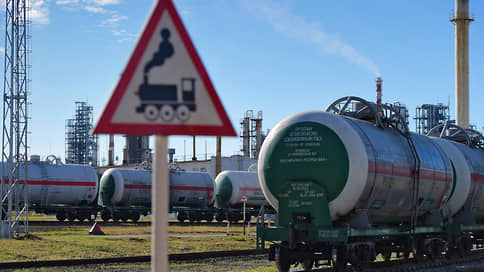How US protectionism will affect the world trade and economy of the country

The US trading partners paused to evaluate the consequences of the duties increased by the country for their deliveries, limiting himself instead of the immediate introduction of countermeasures with verbal interventions. Assessments of the consequences for the United States themselves are already reflected in forecasts. February trade statistics are still fixing the restrained influence of previous restrictions on the trading landscape, but a full -fledged trade war may have more serious consequences: inflation will significantly grow in the country and economic growth will slow down. This will put the Fed to the dilemma: to tighten the DCT to contain inflation or to soften for the sake of supporting the economy, actually postponing the achievement of inflationary goals. The weakening of the dollar can smooth out part of the consequences for the US business and consumers and provide a relatively comfortable “transition period”, but the success of protectionism is not guaranteed and depends on the balance of competition and increase in the release in the economy “closed” from the world.
Raising duties For imports from 185 countries, declared on April 2, US President Donald Trump, has not yet led to the introduction of comparable oncoming restrictions on the country’s key trading partners. The states were limited to statements about the inadmissibility of protectionism and their readiness to introduce countermeasures “if necessary”.
This need, apparently, will be determined on the horizon of the next weeks – depending on the success of negotiations of individual countries with the American side.
Counterers from China, EU, Japan and South Korea (key suppliers of the United States may be especially sensitive to the United States; Mexico and Canada are also among them, but for them a separate tariff regime is provided for them). “Concerned” without specific actions demonstrated to the WTO, noting that due to US actions, world trade in goods will be reduced by 1%by the results of the year. Restrained It turned out And the reaction of international markets: the collapse on them occurred, but was not catastrophic.
According to Kommersant’s interlocutor in the Eurasian Economic Commission, in the EAEU, which regulates the import duties of the countries of the Union, “most likely they will not change – this is the established opinion, the union as a whole, the increase in tariffs hurt, for most countries, the duty will be valid for 10%, in new reality it can be considered the most favorable regime,” he says.
At the same time, Russia, which US duties do not affect in the absence of trade due to the sanctions imposed by Washington due to military operations in Ukraine, itself “has sufficient freedom to introduce unilateral restrictive measures, which often occurred after 2022,” he says.
De facto, if the Russian Federation is hurt by raising duties by other countries in response to raising the imported tariffs of the United States, it will have the opportunity to respond to them, respectively.
A separate plot in this area is, however, the risk of a renewal to the EAEU markets “Asian goods that are not delivered in the United States” – for example, from the PRC or Vietnam, with which the EAEU has a free trade zone. At the same time, intrigue is possible: so, Vietnamese supplies of shoes and light industry products to the Union market are regulated by “trigger” (depending on the volume of import for the period) duties (increased in the next period when the threshold is exceeded), and Vietnam achieves an increase in thresholds. However, these “triggers” were introduced to protect the Union market-and in particular, Kyrgyzstan, which implements its own investment projects in the textile and shoe industry: de facto, when the proposal is growth from Vietnam to the EAEU, will face a difficult choice to rebalassing this scheme, says Kommersant’s interlocutor.
“The great interest, however, is a change in the US interaction vector with the WTO: when creating an organization in it, two principles were laid – roughly speaking,“ trading nations are not fighting ”and“ USA give trading partners access to their market in exchange for consent with their policy. ” And even taking into account the fact that in recent decades, when joining the organization of new countries, they had to open their markets for goods a second stronger than the original Western members of the organization, the current US tariff initiatives show that the “market for loyalty” costs it too expensive, ”said the interlocutor of Kommersant.
Most of the US initiatives from trading partners are emotional and rely on the impressions of the performance of the American president and released numbers than the expected consequences of restrictions (damage has not yet been calculated). Emotions were less affected by forecasts focused on the consequences of the introduced restrictions for the United States themselves. So, in Barclays, inflation is expelled to 4% in the coming months (the same ratings from Peterson Institute for International Economics), the decline in industrial production by the end of the year and an increase in unemployment level up to 4.6% (now – 4.1%).
The Capital Economics and investment banks see an increase in the risk of recession-including due to a noticeable compression of internal demand. According to ING Bank, at least 75% of suppliers from the introduced tariffs will be transferred to consumers. Recall that the last presidential term of Donald Trump in the trading war with China, the indicator was estimated at about 60% – suppliers were ready to take more costs, compensating for losses due to demand for other goods. As recalls in ING, raising duties is actually perceived as regressive taxation: household households with low income spend their large share on goods, while rich consumers acquire more services that are not taxed. However, taking into account the scale of the restrictions introduced, it is clear that both of them will rise in price-in particular, due to duties on auto parts, service and insurance prices will increase.
Potential risks for business due to the rise in import of imports have already been reflected in indicators of business activity (See “Kommersant” from March 26) who now risk sliding to many years of minimums. The pressure on the mood of the companies is also the probability of the introduction of countermeasures, and the unclearness of their scale.
As reminded in Cato Institute, the level of duties announced by Donald Trump is comparable with their size after the signing of the Tariffs of Troubles in 1930: then the trade war exacerbated great depression in the United States.
However, a published February February Foreign Trade statistics of US foreign trade can slightly dilute the pessimism of assessments – it shows the restrained effect of tariff restrictions introduced by Donald Trump earlier on the dynamics of supply.
The US foreign trade deficit decreased by 6.1%over a month, to $ 122.7 billion, due to an export increase of $ 8 billion, to a record $ 278.5 billion. The import was comparable to the January, decreasing by less than $ 100 million, to $ 401.1 billion grew, including from Mexico and Germany. Import from China decreased less significantly than expected: to $ 38.7 billion from $ 40 billion in January and comparable with the volume of supplies before Mr. Trump coming to power. However, the scale of the February restrictions is not comparable with tariffs announced in April. At the same time, statistics, apparently, can be used by the Donald Trump administration as an argument in favor of the insufficiency of already detailed measures to achieve the goal – to reduce the trade deficit.
The risks of acceleration of inflation and slowdown in economic growth can also be put in front of the new dilemma and the American monetary regulator. Some of the analysts, including KPMG, reduced the number of decreased the Fed’s rates laid for this year to one, referring to the fact that in conditions of growing inflation risks, the regulator will hold it in the current corridor longer. In Morgan Stanley, they are not expected at all. However, a script looks more likely in which the monetary policy will not be tightened, but to soften. A temporary refusal to quickly achieve inflationary goals for the sake of supporting the economy will facilitate adaptation to the new rules of the game of consumers and companies (the latter should support tax links) thanks to cheaper loans and weakening the dollar, which will compensate for the increase in salaries by increasing salaries.
It should be noted that the terms of the “transition period”, which in the White House is considered a forced stage before the growth of industrial production and active import substitution are still unpredictable. The whole spectrum of problems that the protectionist policy can turn into. For business, the rejection of the benefits of globalization, which have been declared recent decades, can mean not only the cost of processes, but also a decrease in the quality of the “results”. The departure from the market of a part of foreign manufacturers means a decrease in competition, leading to the loss of foreign markets for a long time.








